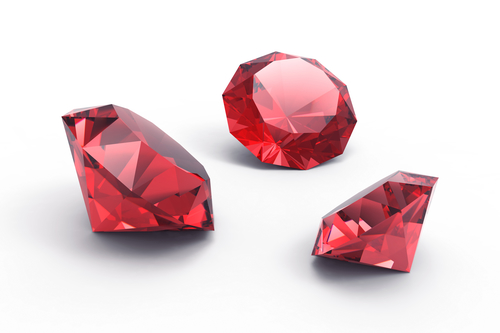By all industry standards, the quality of being a “real” gemstone does not depend on whether the stone was formed naturally or synthetically. In fact, according to the Federal Trade Commission, if two gemstones contain an identical mineral composition, both are considered “real”, even if one of them was created in a lab. On the other hand, the “natural” attribute is an entirely different story. To be considered natural, a gemstone must have formed in nature.
In this article, our expert gemologists are going to explain the difference between these terms and what they mean for you as a buyer.
Gemstones formed through natural processes have a specific mineral composition. This makeup is what gives a gemstone its unique color and clarity. They are considered “real” gemstones and their origins are never brought into question.
Some gems are synthesized in a laboratory but in such a way that their mineral makeup is identical to the ones occurring naturally. They are also considered real, provided that their mineral composition is indeed identical.
However, if a gemstone produced in a laboratory has a different mineral makeup or contains traces of other minerals than the natural gemstone, the man-made stone cannot be considered real gemstone. These synthetic stones are often referred to as “simulated” in the industry. One example is cubic zirconia, a synthetic simulated imitation of the mineral diamond.
Since they have an identical mineral composition, it is impossible for someone without the correct equipment and training to tell a real and a synthetic gemstone apart just by looking. While these differences are invisible to the naked eye, professional laboratories have tests to identify even synthetic diamonds versus natural mined diamonds.
Ironically, though reasonably, synthetic gemstones often look even better than natural gemstones, with fewer inclusions and better coloring. This is the case because the gemstone is created through a series of controlled processes. The minerals responsible for inclusions and color variations are simply not included into its makeup. This makes lab-created gemstones usually ‘’more perfect’’ than their naturally formed counterparts.
Even though synthetic gemstones are essentially flawless, people still prefer buying natural gemstones because the ones occurring naturally are rare and, therefore, more unique and valuable.
The price of a particular synthetic gemstone depends on how easy it is to synthesize it. Therefore, gemstones that are easily created like rubies or sapphires are significantly lower priced than the natural gemstones.

When it comes to price, a simulated lab-grown diamond can be priced as much as 40% lower than a natural diamond with the exact same quality rating. But note that there a huge difference in resale value. A diamond retains much of its value and diamond values have historically risen over time. A synthetic diamond currently has no resale value.
As a buyer, you have the right to know whether you are purchasing a natural or a synthesized gemstone. With Leo Hamel Fine Jewelers, you’ll never have to worry about a gemstone’s authenticity, as we disclose all information about a gemstone’s origin, treatments and any other relevant information.